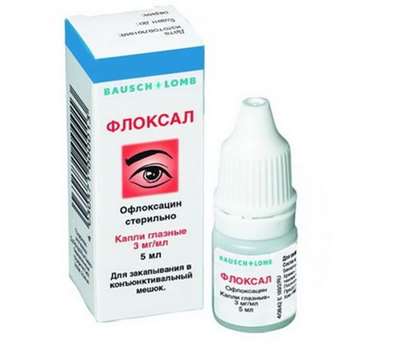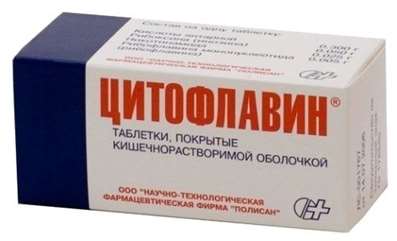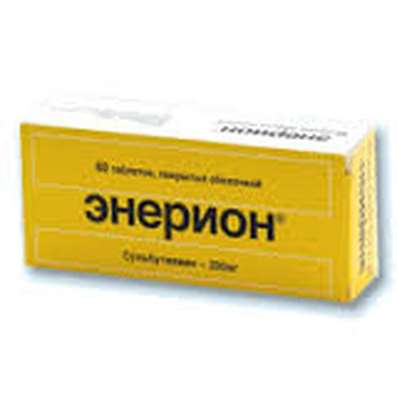Instruction for use: Elidel
I want this, give me price
Active substance Pimecrolimus
ATX code D11AH02 Pimecrolimus
Pharmacological group
dermotropic means
Composition and form of release
Cream for external use 1 g
pimecrolimus 10 mg
auxiliary substances: sodium hydroxide; citric acid is anhydrous; benzyl alcohol; sodium cetyl stearyl sulfate; mono- and diglycerides; cetyl alcohol; stearyl alcohol; propylene glycol; oleyl alcohol; medium chain triglycerides; purified water
in tubes of aluminum for 15, 30 or 100 g; in a pack of cardboard 1 tuba.
Description of dosage form
Homogenous cream from white to almost white.
pharmachologic effect
Pharmacological action - anti-inflammatory local.
Pharmacodynamics
Pimecrolimus is a derivative of macromolactam ascomycin and has an anti-inflammatory effect. Pimecrolimus selectively inhibits the production and release of cytokines and inflammatory mediators from T-lymphocytes and mast cells.
Pimecrolimus specifically binds to the cytosolic receptor macrophilin-12 and inhibits calcium-dependent phosphatase-calcineurin. Inhibition of calcineurin leads to suppression of T-lymphocyte proliferation and prevents transcription and production of early cytokines such as IL-2, γ-interferon, IL-4, IL-5, IL-10, tumor necrosis factor in T helper types 1 and 2 (TNF-α) and granulocyte-macrophage colony-stimulating factor. Pimecrolimus and tacrolimus equally suppress the secondary immune response in isolated cell colonies of skin T-helper cells obtained from patients with atopic dermatitis.
In addition, in vitro, after interaction with the antigen / IgE complex, pimecrolimus prevents antigen / IgE-mediated release of cytokines and inflammatory mediators from mast cells. Pimecrolimus does not affect the growth of keratinocytes, fibroblasts and endothelial cells and, in contrast to corticosteroids, has a selective effect on the cells of the immune system and does not cause disturbances in function, viability, differentiation processes, maturation of Langerhans cells in mice and dendritic cells of monocytic origin in humans. The drug does not affect the differentiation of "naive" T-lymphocytes in T-effector cells under the action of Langerhans cells and dendritic cells, which is one of the main mechanisms of a specific immune response.
On experimental models of cutaneous inflammation, the high anti-inflammatory activity of pimecrolimus was demonstrated after its local and systemic use. When applied locally in experimental models of allergic contact dermatitis (AKD), pimecrolimus is comparable in effectiveness to highly active corticosteroids: clobetasol-17-propionate and fluticasone, inhibits the inflammatory response in response to skin irritants without causing a change in the consistency and atrophy of the skin.
In addition, with local and oral administration of pimecrolimus on experimental models, AKD effectively reduces skin inflammation, itching, and severity of histopathological changes. With topical application, the degree of penetration into the skin of tacrolimus and pimecrolimus is equally good. However, the ability of pimecrolimus to penetrate the skin is less than that of tacrolimus and GCS. Thus, pimecrolimus has a selective effect on the skin.
The uniqueness of the mechanism of action of pimecrolimus is the combination of a selective anti-inflammatory effect on the skin with a slight effect on the systemic immune response.
When used for 6 weeks in children aged 3 months to 17 years, pimecrolimus effectively reduces itching and skin inflammation (erythema, infiltration, excoriation and lichenization). With prolonged use for 12 months, pimecrolimus effectively reduces the incidence of sudden exacerbation of AKD without causing atrophy, irritation and increased skin sensitivity without phototoxic or photosensitizing effects.
Pharmacokinetics
Adults. The concentration of pimecrolimus in the blood was determined in 12 adult patients with atopic dermatitis (eczema) with a lesion of 15-59% of the body surface area treated with Elidel cream twice a day for 3 weeks. In 77.5% of the observations, the pimecrolimus concentration in the blood was below 0.5 ng / ml (the minimum detectable concentration), and in 99.8% - below 1 ng / ml. Cmax of pimecrolimus in the blood, recorded in 1 patient, was 1.4 ng / ml.
In 98% of 40 adult patients with an initial lesion of 14-62% of the body surface area after 1 year of treatment with Elidel cream, the pimecrolimus concentrations in the blood remained low and in most cases were below the minimum detectable concentration.
The Cmax value, which was 0.8 ng / ml, was recorded after 6 weeks of treatment in only 2 patients. None of the patients showed a rise in concentration during the 12 months of treatment. During the 3-week treatment period with Elidel cream twice a day, the maximum recorded concentration of pimecrolimus in the blood was 0.91 ng / ml in 13 adult patients with dermatitis of the hands (using the palm rest and the back of the hand and bandaging at night).
In 8 patients with a pimecrolimus content in the blood above the minimum detectable concentration, the AUC value was 2.5-11.4 ng / ml.
Children. Pharmacokinetic studies of pimecrolimus were performed in 58 children aged 3 months to 14 years with atopic dermatitis (eczema) with 10-92% of the body surface area treated with Elidel cream twice a day for 3 weeks. Five children were treated for 1 year as needed.
The concentrations of pimecrolimus in the blood were at a consistently low level, regardless of the area of skin lesions and the duration of therapy, and were in the same range of values as in adult patients treated with Elidel cream in the same doses. In 97% of cases, pimecrolimus concentrations in the blood were below 2 ng / ml, and in 60% - below 0.5 ng / ml (the minimum detectable concentration). Cmax pimecrolimus, registered in 2 patients aged 8 months and 14 years, was 2 ng / ml.
Among the youngest children (3 to 23 months), Cmax pimecrolimus was 2.6 ng / ml and was recorded in 1 patient.
In 5 children treated with Elidel cream for 1 year, the concentrations of pimecrolimus were at a consistently low level. The maximum value recorded in 1 child was 1.94 ng / ml. Throughout the treatment period, the increase in drug concentrations was not observed in any of the patients.
In 8 children aged 2 to 14 years with a pimecrolimus content in the blood above the minimum detectable concentration, the value of AUC was 5.4-18.8 ng / ml for triplicate measurement. The values of AUC in patients with an area of skin lesions of less than or more than 40% were comparable.
In in vitro studies, binding of pimecrolimus to plasma proteins (mainly with different lipoproteins) was 99.6%.
Since the local application of pimecrolimus in the blood is very low, the determination of metabolic parameters is not possible.
Pharmacokinetics in special clinical cases
Atopic dermatitis (eczema) is rarely observed in patients aged 65 years and older. The number of patients of this age in clinical studies of 15% of Elidel cream was insufficient to detect any difference in treatment effectiveness compared to younger patients.
Recommendations for dosing for infants (3-23 months), children (2-11 years) and adolescents (12-17 years) do not differ from the recommendations for adult patients.
Indications
Atopic dermatitis (eczema) - for short-term and long-term use in adults, adolescents and children (aged 3 months).
Contraindications
hypersensitivity to thymrocrolimus or any components of the drug;
Children under 3 months of age (safety and efficacy of Elidel cream in children under 3 months of age have not been studied);
presence of acute viral, bacterial or fungal infections of the skin.
Carefully:
patients with the syndrome of Netherton (no safety data are available) - there is a risk of increasing systemic absorption of the drug;
severe forms of inflammation or skin lesions, incl. generalized erythroderma (no safety data available) - risk of increased systemic absorption of the drug is possible;
weakened immunity. efficacy and safety of use have not been studied.
Data on the safety of prolonged use of Elidel cream are not available.
Since the effect of prolonged use of the drug on the immune defense of the skin and the frequency of development of malignant neoplasms has not been studied, Elidel cream should not be applied to damaged areas of the skin with possible malignancy or dysplastic changes.
In the case of bacterial or fungal skin lesions, the use of Elidel cream on affected areas is possible only after curing the infection.
pregnancy and lactation
There are no data on the use of the drug in pregnant women. In experimental studies with local application of the drug direct or mediated damaging effect of Elidel cream on pregnancy, the development of the embryo / fetus, the course of labor and postnatal development of the offspring was not revealed. Care should be taken when prescribing to pregnant women. However, given the minimum degree of absorption of pimecrolimus in topical application, the potential risk in humans is considered negligible.
Isolation of the drug with breast milk after topical application on experimental models has not been studied. There are no data on the content of pimecrolimus in breast milk of lactating women.
Because many drugs are excreted in breast milk, caution should be exercised in appointing 1% of Elidel cream to lactating women. However, given the minimal degree of systemic absorption of pimecrolimus in topical application, the potential risk to humans is considered negligible.
Nursing women should not apply 1% Elidel cream to the area of the mammary glands.
The effect of Elidel cream on fertility in men and women is not established.
Side effects
The use of Elidel cream may cause minor transient reactions at the site of application, such as a feeling of heat and / or burning. If these reactions are significant, patients should consult a doctor.
The most frequent reactions at the site of application of the drug were observed in 19% of patients treated with Elidel cream and in 16% of patients in the control group. These reactions mainly occurred at an early stage of treatment, were mild / moderate and short-lived.
Determination of the frequency of adverse reactions: very often (≥1 / 10); often (≥1 / 100, <1/10); sometimes (≥1 / 1000, <1/100); rarely (≥1 / 10000, <1/1000); very rarely (<1/10000), including individual messages.
Very often - burning in the place of application of the cream.
Often - local reactions (irritation, itching and redness of the skin), skin infections (folliculitis).
Sometimes - suppuration, worsening of the disease, herpes simplex, dermatitis due to herpes simplex virus (herpetic eczema), molluscum contagiosum; local reactions such as rashes, pain, paresthesia, peeling, dryness, swelling, cutaneous papillomas, boils.
The following undesirable reactions were noted in the post-marketing application of the drug (frequency estimate for the number of cases of development of adverse events in an unidentified population).
From the side of the immune system: very rarely - anaphylactic reactions.
From the side of metabolism (metabolic disorders): rarely - alcohol intolerance.
From the skin and its appendages: rarely - allergic reactions (rash, hives, angioedema); changes in skin color (hypopigmentation, hyperpigmentation).
In most cases, immediately after drinking alcohol, reddening of the face, rash, burning, itching or swelling developed.
In the case of Elidel cream, malignant tumors, including cutaneous and other types of lymphomas, skin cancer were rarely noted. Causal relationship between these adverse events and the use of the drug is not established.
Interaction
Potential interaction of Elidel cream with other drugs has not been studied. Given that the systemic absorption of pimecrolimus is very low, any interaction of the Elidel cream with drugs for systemic use is unlikely.
When using Elidel cream in children aged 2 years and older, the drug did not affect the effectiveness of vaccination.
It is not recommended to apply cream on the area of administration of the vaccine until the local manifestations of postvaccinal reaction disappear completely.
Incompatibility. Because compatibility studies have not been conducted, it is not recommended to use the drug in conjunction with other topical agents.
Dosing and Administration
Outwardly.
Treatment should be started at the first manifestations of the disease in order to prevent a sharp development of its exacerbation.
The cream is applied a thin layer on the affected surface 2 times a day and gently rubbed until completely absorbed.
The cream can be applied to the skin of any parts of the body, including the head, face, neck, and also on the area of diaper rash. Cream Elidel should be applied 2 times a day, until the symptoms disappear completely. If the symptoms persist after 6 weeks of use, the patient should be re-examined to confirm the diagnosis of atopic dermatitis. After cessation of treatment, in order to avoid subsequent exacerbations, at the first signs of recurrence of atopic dermatitis therapy should be resumed. Emollients can be applied immediately after applying 1% Elidel cream. However, after water treatments, emollients should be used before applying Elidel cream.
Considering the very insignificant systemic absorption of pimecrolimus, the limitations of the total daily dose of the applied preparation, the area of the skin surface to be treated, or the duration of treatment does not exist. If you get Elidel cream in the eyes, on the mucous membranes (oral or nasal cavity), immediately remove the cream and rinse the eyes and mucous membranes with running water.
Overdose
Cases of overdose or accidental use with the use of Elidel cream were not observed.
special instructions
In the treatment of calcineurin inhibitors for topical use, including Elidel, malignant neoplasms (eg, skin tumors and lymphomas) were rarely seen. Causal relationship between these adverse events and the use of the drug is not established.
In clinical studies with the use of Elidel cream, 0.9% of patients (14 of 1544) had development of lymphadenopathy. Usually, lymphadenopathy was caused by infectious diseases and disappeared after the course of appropriate antibiotic therapy. All patients either managed to identify the cause of lymphadenopathy, or the disappearance of this undesirable phenomenon. In patients receiving treatment with Elidel, with the development of lymphadenopathy, it is necessary to establish the etiology of the process and ensure that patients are monitored until this undesirable phenomenon disappears completely. If the etiology of lymphadenopathy is unidentified or if the patient has acute mononuclear inflammation, the drug should be discontinued.
When treating with Elidel cream, patients are advised to minimize artificial or natural skin insolation to a minimum or completely eliminate UV irradiation. The possible effect of the drug on skin lesions caused by UV exposure is unknown.
Impact on the ability to drive vehicles and manage mechanisms. The effect of using Elidel cream on the ability to drive vehicles or work with mechanisms is not established.
Conditions of leave from pharmacies
On prescription.
storage conditions
At a temperature not higher than 25 ° C (do not freeze).
Keep out of the reach of children.
Shelf life
2 years. After the first autopsy, use within 1 year.
Do not use after the expiry date printed on the package.

 Cart
Cart





